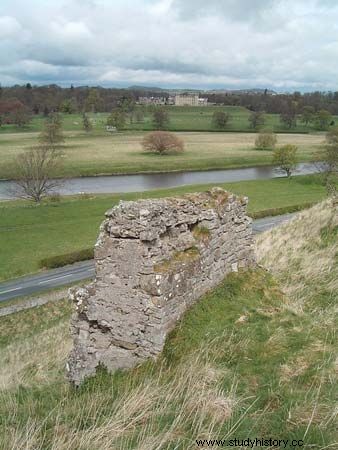Roxburghshire , also Called Roxburgh , historic southeast county Scotland , along the English border. It covers an area stretching from the valleys of the rivers Tweed and Teviot in the north to the Cheviot Hills in the southeast and the as Liddesdale known valley extends to the southwest. Roxburghshire is entirely within the area Scottish Borders Council.

Among the numerous archaeological remains in the area are prehistoric forts in the valleys and later Roman camps, forts and signal stations, as well as the Dere Street, the Roman road running north from England. After the Roman retreat from Great Britain in the 5th century ad made Roxburghshire part of the Celtic British Kingdom Strathclyde . The Anglo-Saxon Kingdom Northumbria then held the region for four centuries until it was ceded to Scotland in 1018. David I. designated Roxburghshire as Shire. In the 13th century, the ancient county town of Roxburgh was a member of the court of the four burghs. The town was abandoned when the castle was destroyed and James II of Scotland was killed in 1460; it was created by Kelso superseded . Other towns in the area were repeatedly burned during the border war between the Scots and the English, and the abbeys of Jedburgh , Kelso and Melrose were destroyed in 1544–45. Abbotsford near Melrose was the writer's last home Sir Walter Scott from the 19th century. The area is known as "Scott country". During the 18th and 19th centuries, wool textile manufacture expanded the county's economy, which was traditionally based on livestock.
